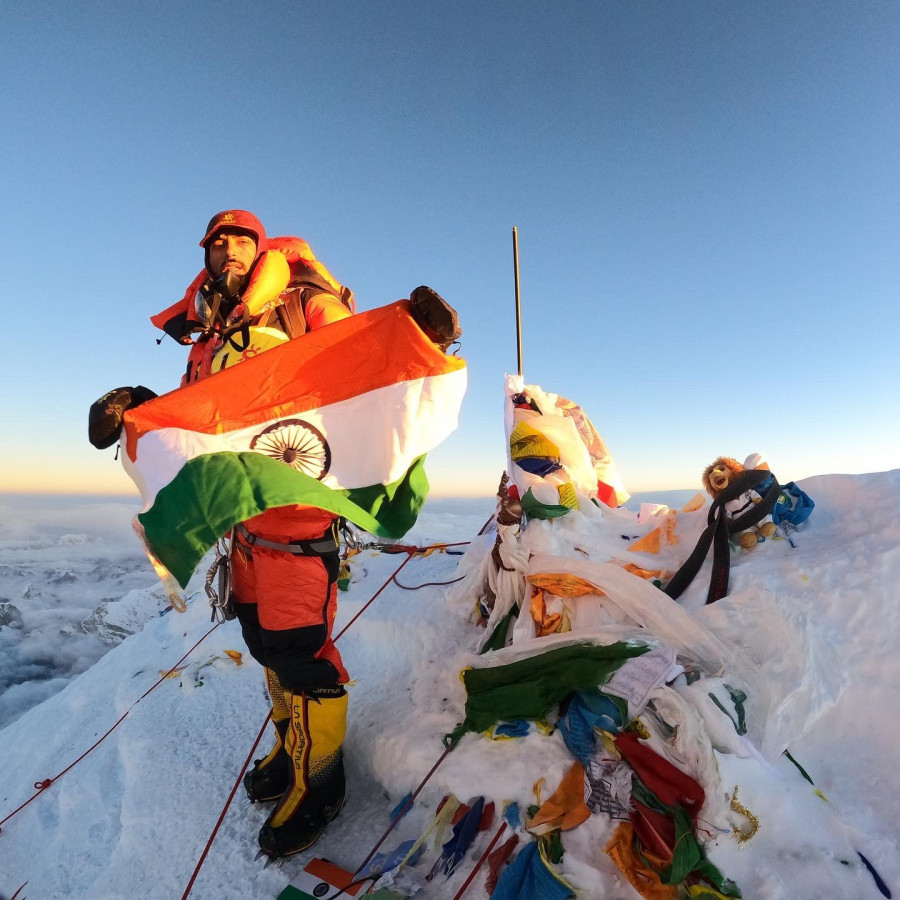Money
An Indian’s quest for redemption after Everest fraud charges
After 6-year ban, Narender Singh Yadav reaches top of the world, a feat feeling like ‘rebirth’.
Sangam Prasain
Indian mountaineer Narender Singh Yadav, who claimed to have conquered the world's tallest peak in May 2016, was recommended for the Tenzing Norgay Award in 2020, one of the highest honours conferred by India for outstanding achievement in the field of adventure activities on land, sea and air.
But his name was withheld at the last moment from the list after media reports that he faked his summit and presented doctored documents of climbing the 8,848.86-metre Everest.
Nepal constituted an inquiry panel in August 2020 and came up with the report in February 2021.
The inquiry concluded that Yadav and another Indian climber Seema Rani Goswami, in the same group, did not climb Everest but made false Everest climbing certificates.
Many climbers take risks and spend millions to climb Everest for pride but there are many who climb Everest for honour, prizes and promotions, according to mountaineering officials.
Yadav lost the honour. He was called out. He was dubbed a fraud.
In Nepal, Yadav was banned from climbing mountains, from May 20, 2016, for six years. His certificate issued in 2016 was also revoked.
Last month, he came to Nepal—quietly. No one knew he was in search of vindication.
And then he surprised everyone.
His ban was applicable until May 20, 2022.
The 28-year-old climber then made a record on Everest, by reaching the top in just six days, a feat not achieved by any Indian before.
“It feels really good. It’s like I have been reborn,” Yadav told the Post on Thursday.
Yadav, who lives in Nehru Garh of Rewari district in Haryana, India, entered Nepal on April 23 and stayed in Butwal with his sister for a few days, before coming to Kathmandu on May 17.
“We issued him the climbing permit on May 21, a day after his ban ended,” said Bhishma Raj Bhattarai, an official at the Tourism Department, the government agency responsible for issuing climbing permits and monitoring the climbs.
Yadav’s debriefing, which is usually conducted after climbers submit their proof of reaching the highest point on the planet, to obtain certificates, was held on June 1.
“We issued him the certificate of success the same day after verifying his climb,” Bhattarai told the Post. “He presented documents with dozens of pictures and videos taken from different angles.”
When his Everest claims were dismissed last year, he was subjected to public shaming.
“People called me a fraud,” said Yadav, son of Krishnachand, an Indian official. “I am happy now. I waited for many years to achieve this goal. This time I did it without acclimatising.”
Yadav's permit was issued on May 21. He flew to the Everest base camp on the same day in a helicopter and started to climb Everest directly without acclimatisation, said Nivesh Karki, executive director of Pioneer Adventure, the agency that handled Yadav’s climb.
On May 22, he left for Camp 2. After resting in Camp 2 for two days, he reached Camp 3 on May 25 and rested for the night. On May 26, he left for Camp 4, the last point from where climbers begin their summit push.
Yadav reached the summit at 5:02am on May 27.
“He returned to Kathmandu on May 29,” said Karki.
This spring, Everest opened on May 7. The closing date was announced on May 29.
Foreign climbers normally spend 30 to 45 days at the Everest base camp as they acclimatise themselves—going up and down the foot of Everest—before making the final push.
Mountaineering officials say that the weather behaved well this year as the climbing weather window was extended for a longer period.
“The preliminary report shows that 560 climbers, including high-altitude guides, have reached the summit so far,” said Bhattarai, the official at the department.
The government had issued Everest climbing permits for 325 fee-paying climbers this spring.
Yadav led the expedition team ‘Azadi Ka Amrit Mahotsav Fastest Everest Expedition 2022’, according to Bhattarai.
Officials say that issues regarding fake Everest climbing had been continuing for several past years.
In 2016, Nepal imposed a 10-year mountaineering ban on two climbers—Dinesh Rathod and Tarakeshwari—who claimed to be the first Indian couple to have climbed Everest.
A government investigation concluded that photographs purporting to show the pair atop the world's highest mountain were faked.
The pair's claims to have reached the peak in May 2016 were questioned by climbers.
Yadav, along with Goswami, had climbed Everest in the same year, but their file reopened only in 2020.
Yadav was nominated in 2020 for the Tenzing Norgay National Adventure Award. However, his participation in the ceremony was suspended over doubts concerning his claims of having summited Everest.
Nepal’s Mountaineering Department started a formal investigation in August 2020 following a request from India’s Ministry of Youth and Sports, four years after the controversial summit.
As part of the evidence of having climbed Everest, every climber has to submit a photograph of themselves standing atop the mountain at the Mountaineering Department within five months of the completion of the expedition in order to get the certificate.
Yadav now wants to forget the past years through which he and his parents had to suffer humiliation.
He has found redemption.
He has so far climbed the highest summits in five continents, including Everest. His next targets are Denali in North America and Vinson in Antarctica.
“I have a dream to climb all the highest mountains in seven continents,” said Yadav.




 15.76°C Kathmandu
15.76°C Kathmandu















